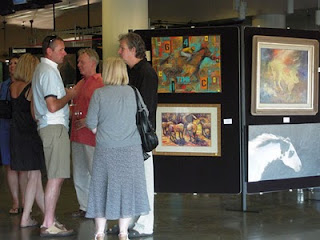An easy question right? If you’re an artist you should understand how colors work. Chroma, hue, tint, value, analogous, complementary, split complementary, primary, secondary, and tertiary. Shouldn’t all these words be understood and have meaning for every artist? On the other hand, isn’t it just so much simpler to buy another colored pencil or tube of paint when you want a specific color? Why understand the effects of color mixing at all?
I spent years painting without giving much thought to these concepts. And I had been trained in art! I completed a minor in Fine Art during college and a double major including Scientific Illustration in graduate school. My dog and horse paintings got on just fine using the most common “animal” palette colors including black and a collection of ochres, siennas, umbers, and Payne’s Gray. It was all good. That is until the day I picked up a couple of books and had my mind blown. One was Jan Hart’s “
The Watercolor Artist’s Guide to Exceptional Color” and the other, Peggy Macnamara's “
Painting Wildlife in Watercolor.” (Which, by the way, I found at the North Light bookshop for a DECENT price...)
I was astounded. All the grays in their worlds were lively. Rich and colorful. No flat blacks at all! Color palettes were pleasing even though they were made up of limited colors. The colors worked so well together! How did they do it? I just had to know.
I started experimenting. No more black for me…no sir. And what about those ochres? Wouldn’t some Quinacridone Gold just look so much more beautiful there instead? Transparent colors – yes! But what about some granulating ones to add some body? Oh yes that too!
From here my story should take you through my entire art career eventually culminating in me becoming a famous painter whose works are renowned for their qualities of light. That are known for their extraordinary color harmonies. A success story that makes you smile and perhaps become a tiny bit envious.
But that’s not what’s happened, at least not yet. Disappointed? Don’t be. My journey is still in its the formative stages and I foresee a long road of exploration ahead for me. :-)
Over the next few posts I’m going to talk more about my journey into color theory, including making my own “color cards” to help me better understand how colors can work together harmoniously. Eventually, I’ll also be talking about my own creative workbook of experiments to help me use my theories to good effect. Yes, my process is still-on going. But that’s great because if it were already over I’d be very disappointed.







































